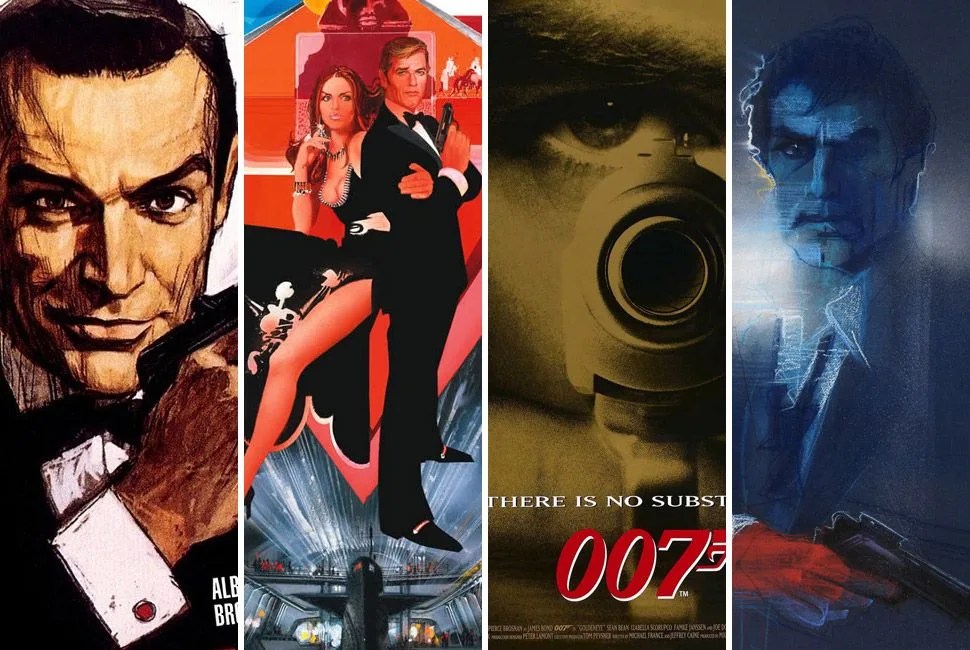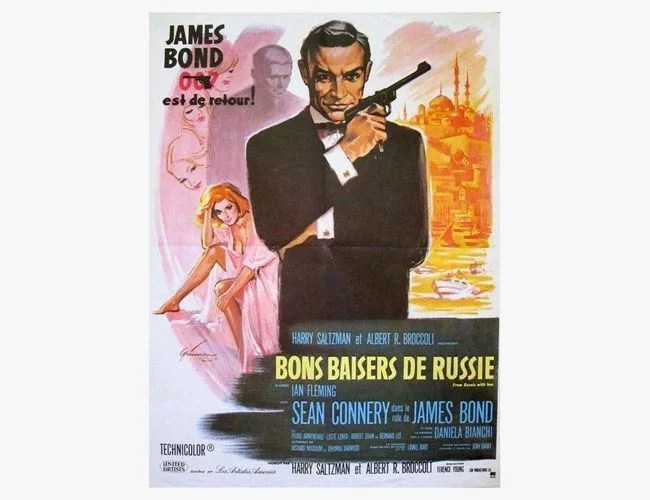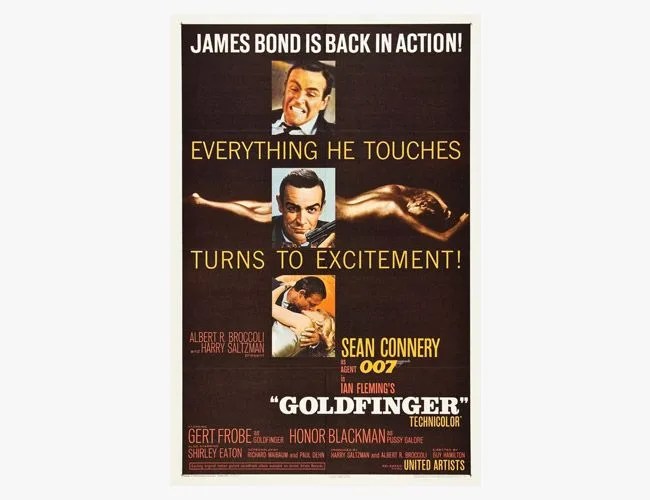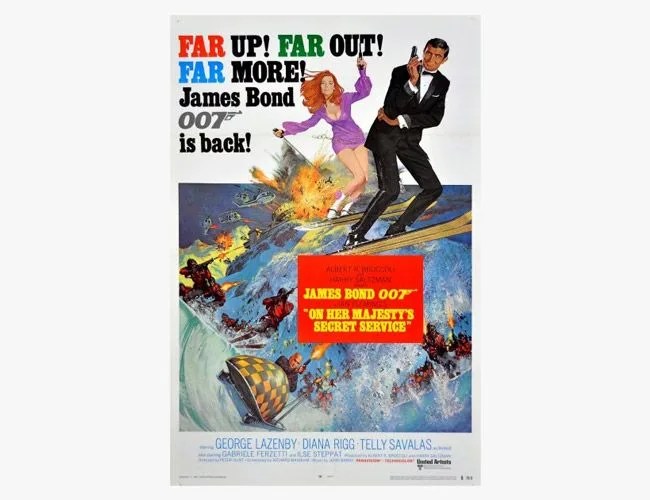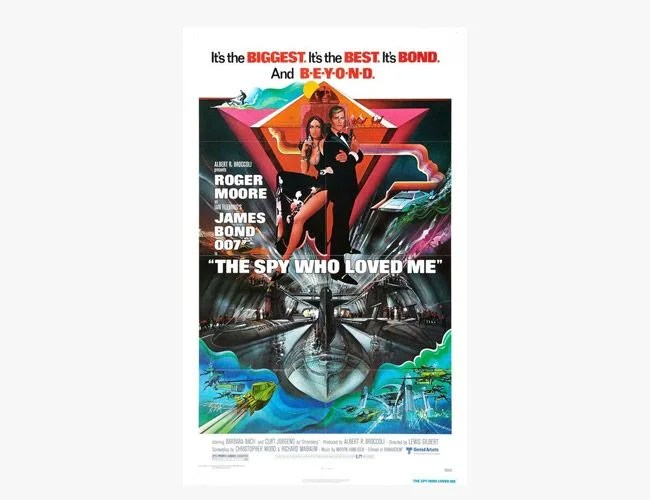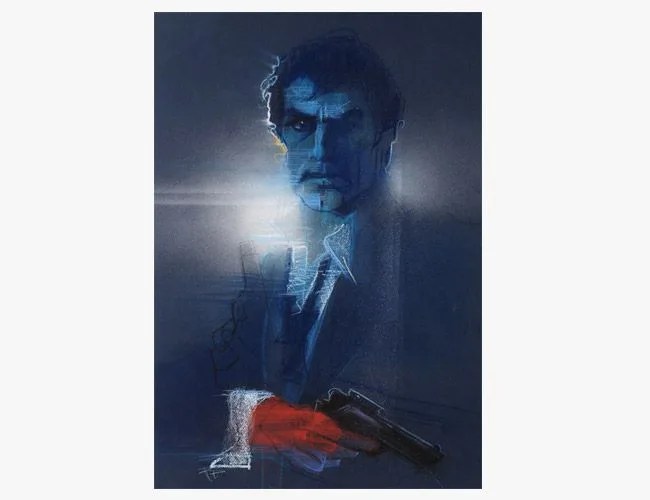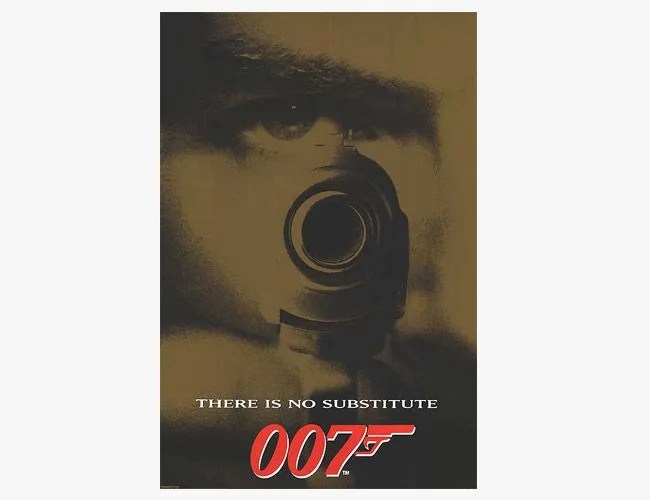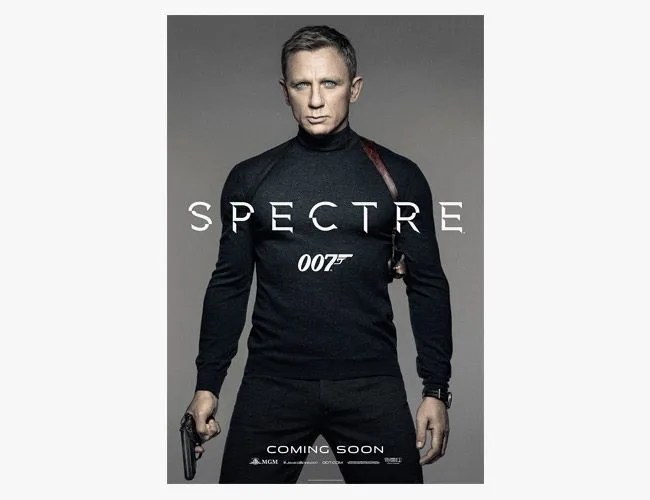In 1961, a Canadian film producer named Harry Saltzman read Ian Fleming’s 1959 spy novel Goldfinger, the seventh in the James Bond series, and decided to buy film rights to the character. Not long after, he was approached by Cubby Broccoli, a Queens-born film producer living in London, who explained he wanted to purchase them for himself. Instead of competing, they formed a partnership, founding Danjaq, LLC (named after their wives, Dana and Jacqueline) and Eon Productions, which have produced all 24 bond films to date.
Their first was a low-budget adaptation of Fleming’s first novel, Dr. No, starring an amateur bodybuilder from Ireland named Sean Connery. It was a massive success; the film grossed nearly 60 times over its $1.1 million budget, launching 007 into the cultural conscience of generations to come. (For perspective, the budget for Spectre, five decades later, is reported to exceed $300 million.) Promotional posters for the films have become collectables, originals often selling for tens of thousands of dollars. Early artwork was illustrated, and pictured the motifs to be expected from Bond — girls, guns and dinner jackets — which were later photographed in the Hollywood style de rigueur. Below are a handful from 1962 to 2015, which when seen together chart the growth of the character we know and revere today. The girls and guns, however, haven’t changed much. Call Bond a little old-fashioned.
Dr. No (1962)
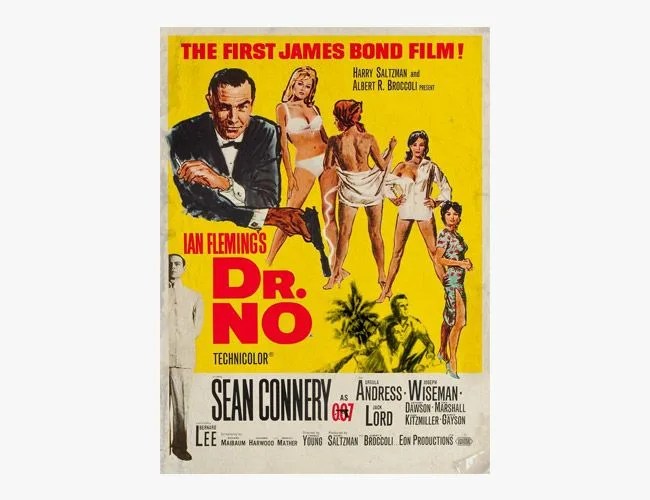
Dr. No wasn’t just the first Bond film — it was the catalyst for an entire genre of stylized spy-espionage films and television shows in the ‘60s, including The Man from U.N.C.L.E. and Our Man Flint. Set in the Caribbean, with an unforgettable cameo by Ursula Andress (and her two-piece bathing suit), the film secured Bond’s iconic self-introduction with the words: “Bond. James Bond.” Above is the 1962 debut poster, drawn by Mitchell Hooks, which proved monumental. It was the first time the world saw Connery as the longstanding face of the franchise.
